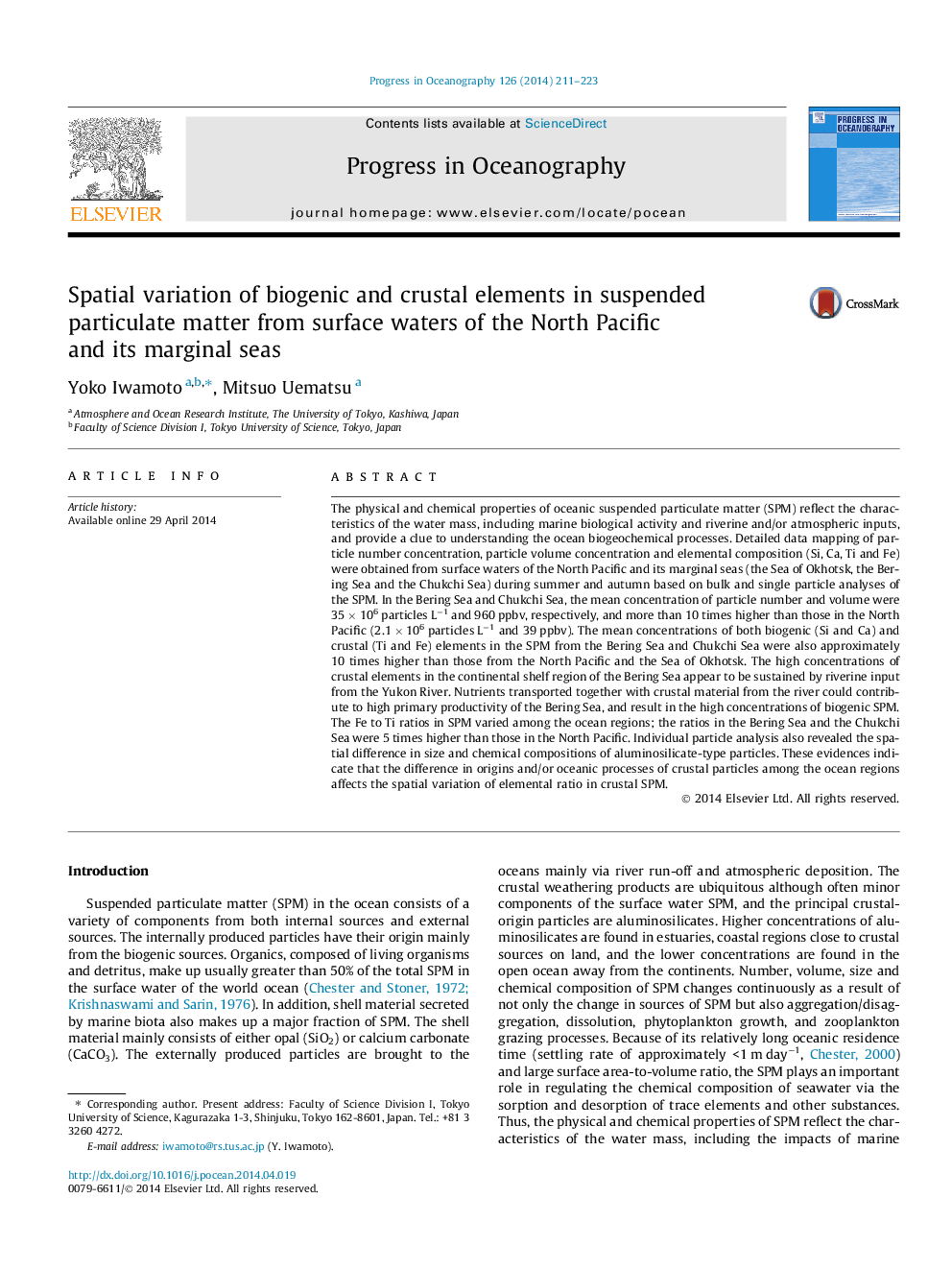| Article ID | Journal | Published Year | Pages | File Type |
|---|---|---|---|---|
| 4553106 | Progress in Oceanography | 2014 | 13 Pages |
•Detailed mapping data for chemical composition of oceanic particles were obtained.•Both bulk and single particle analyses were done to characterize oceanic particles.•Crustal-origin particles are found ubiquitously in the surface water of open ocean.•Particles in marginal seas are more affected by crustal materials than open ocean.•Elemental ratios in crustal particles differed significantly among the ocean regions.
The physical and chemical properties of oceanic suspended particulate matter (SPM) reflect the characteristics of the water mass, including marine biological activity and riverine and/or atmospheric inputs, and provide a clue to understanding the ocean biogeochemical processes. Detailed data mapping of particle number concentration, particle volume concentration and elemental composition (Si, Ca, Ti and Fe) were obtained from surface waters of the North Pacific and its marginal seas (the Sea of Okhotsk, the Bering Sea and the Chukchi Sea) during summer and autumn based on bulk and single particle analyses of the SPM. In the Bering Sea and Chukchi Sea, the mean concentration of particle number and volume were 35 × 106 particles L−1 and 960 ppbv, respectively, and more than 10 times higher than those in the North Pacific (2.1 × 106 particles L−1 and 39 ppbv). The mean concentrations of both biogenic (Si and Ca) and crustal (Ti and Fe) elements in the SPM from the Bering Sea and Chukchi Sea were also approximately 10 times higher than those from the North Pacific and the Sea of Okhotsk. The high concentrations of crustal elements in the continental shelf region of the Bering Sea appear to be sustained by riverine input from the Yukon River. Nutrients transported together with crustal material from the river could contribute to high primary productivity of the Bering Sea, and result in the high concentrations of biogenic SPM. The Fe to Ti ratios in SPM varied among the ocean regions; the ratios in the Bering Sea and the Chukchi Sea were 5 times higher than those in the North Pacific. Individual particle analysis also revealed the spatial difference in size and chemical compositions of aluminosilicate-type particles. These evidences indicate that the difference in origins and/or oceanic processes of crustal particles among the ocean regions affects the spatial variation of elemental ratio in crustal SPM.
